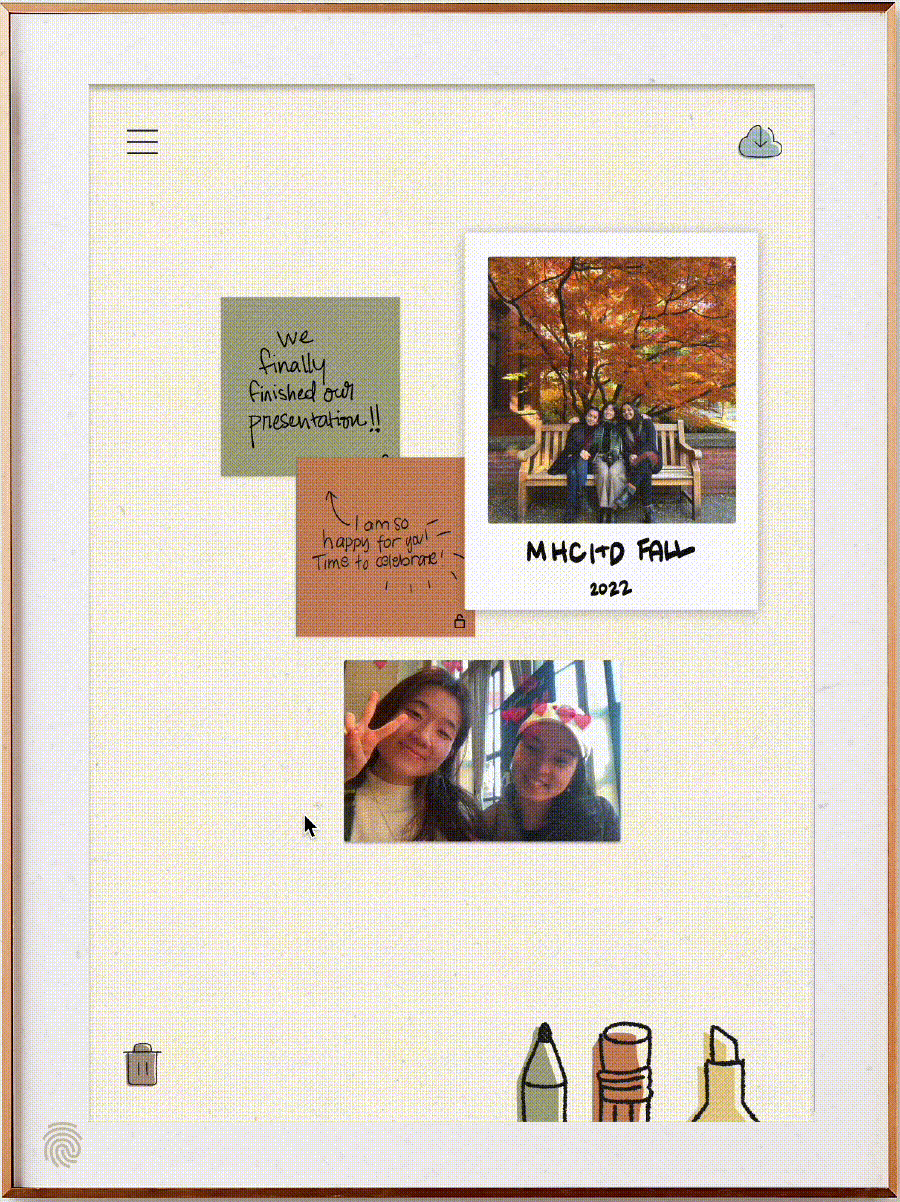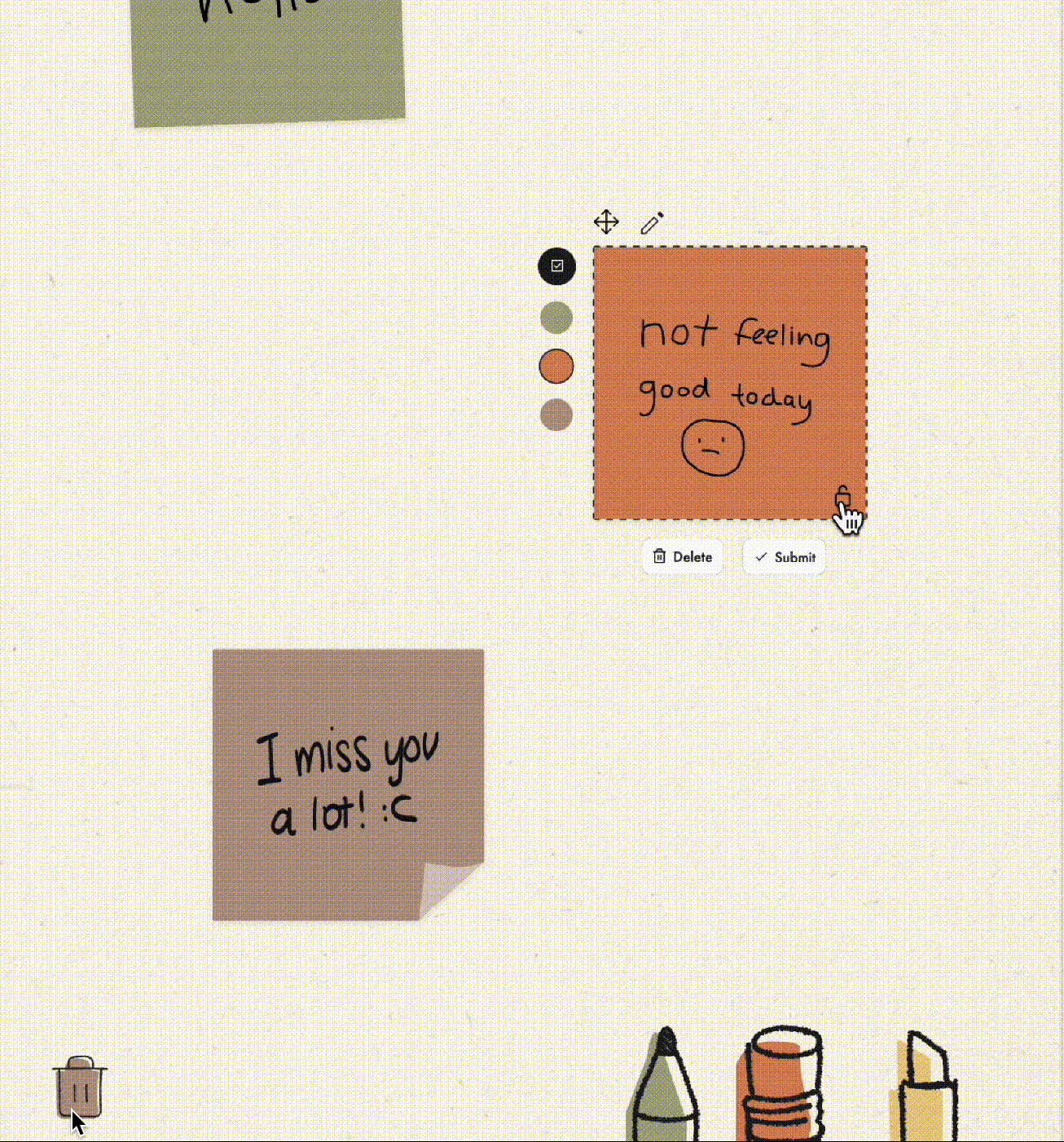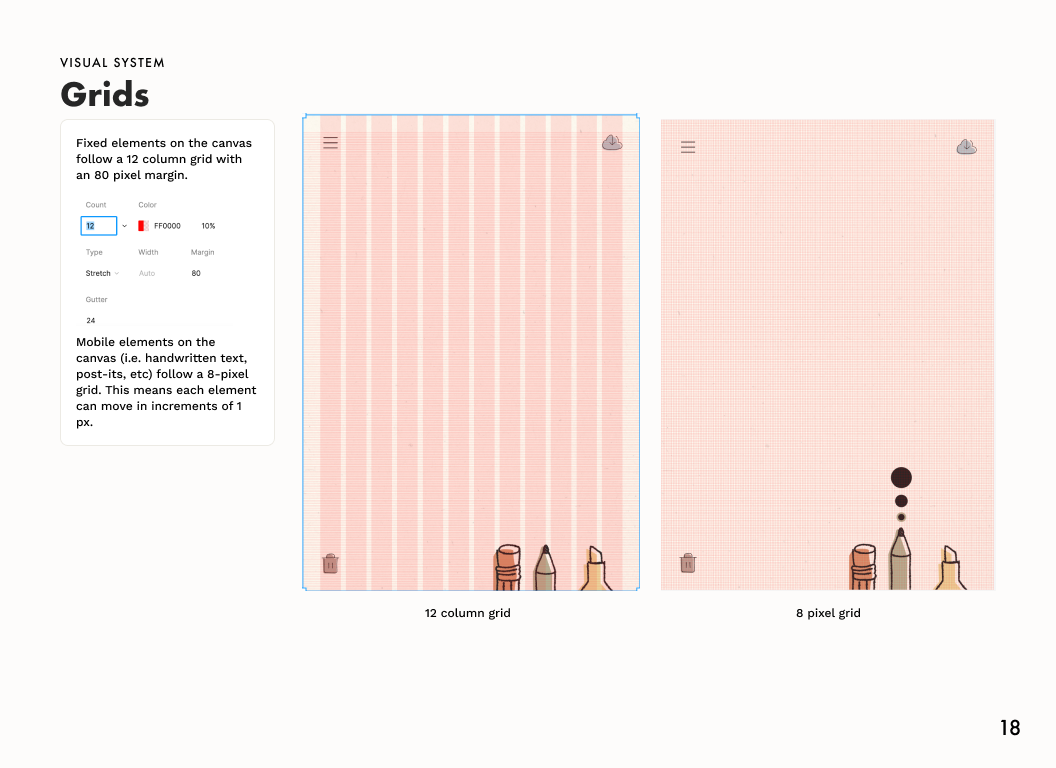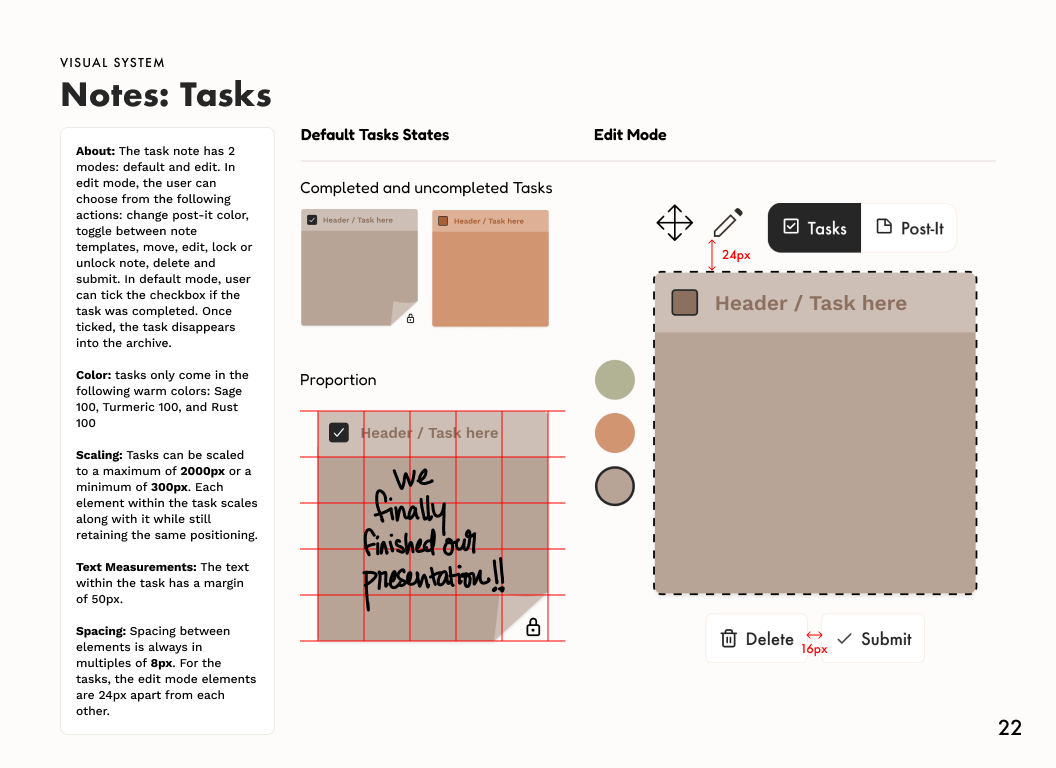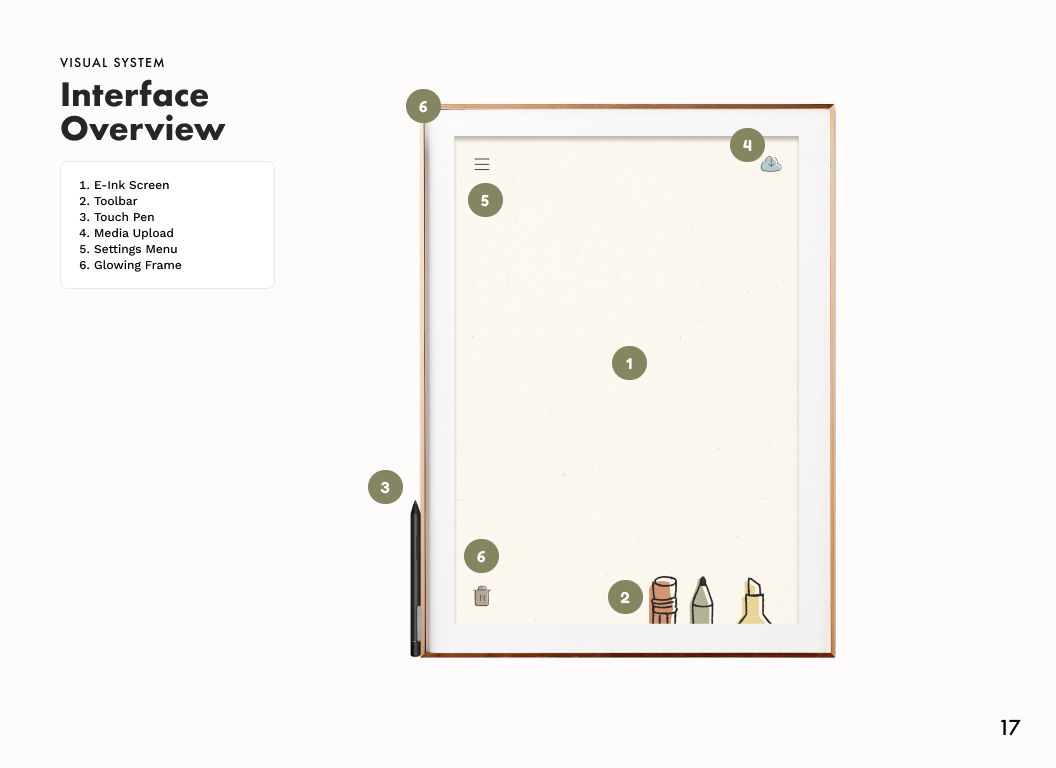
Kinnection, a digital cork board that connects transnational families
Collaborators
2 Designers
1 Researcher
Role
Product Designer
Duration
10 weeks
Company
MHCI+D Project
NOTABLE CONTRIBUTIONS
Research
designed research study and conducted 9 user interviews within 1 week
Information Architecture
Collaborated with a teammate to design IA iteratively
Ideation & Synthesis
Conceptualized 30 ideas and led affinitization
Design System
Developed a style guide with comprehensive notes
Rapid Testing Spearheaded usability testing with 15 participants
Design
Oversaw design of low to high fidelity prototypes
PROBLEM SPACE
In 2021, Asians comprised 60% of all international graduate students in the US. Many of international students struggled maintaining close relationships with their loved ones back home due to inadequate communication methods and tools such as messaging apps. Our solution aimed to bridge that communication gap by creating a more tangible, secure, and intuitive experience.
DESIGN APPROACH
A paired digital cork board that makes communication between long distance families more effective and tangible
Each family member, located in a different place, has their own private board. Kinnection provides a secured, shared space for families to express their experiences and thoughts through handwritten notes, photos, or doodles.
Handwrite notes directly on the board with a pen
Users can handwrite notes directly on the board or on sticky notes. Handwriting notes were proven to foster openness and vulnerability between individuals.
Paired boards allow for real-time interactions
Collaborating at the same time makes the interaction feel more real.
Creates tangible experiences through light and sound
Building presence is important between long distances. As users write on the board, a subtle writing sound can be heard by the other family member. The board also glows when new messages appear.
Notes age and fade to encourage engagement between families.
Avoids over-cluttering the canvas and encourages users to engage with the board if it looks neglected.
Keeps messages private with protected notes and screensavers
The screensaver morphs the board into a regular picture frame, hiding the messages and notes from public view .
Video by Aavishii Saxena
RESEARCH
Understanding Asian International Graduate Students’ Challenges While Adjusting To An American Educational System
According to research, it was found that Asian graduate students face significant social, cultural, psychological, and individual adjustments as they strive to adapt to the American higher educational system. Numerous students have expressed a sense of cultural assimilation, wherein they felt the need to conform to American customs, leading to a loss of their own cultural identity.
Research Methods
10 Research papers read
9 Semi-structured interviews with past Asian students Questionnaire
2 Rounds of qualitative synthesis affinity map
Our Initial Assumption, ‘That Students May Feel Distant From Their Cultural Identity’ Was Overturned
Instead, findings showed that they strengthened their cultural identity and grew as individuals but their main challenge was communicating those changes and maintaining connections with their families.
CHALLENGE STATEMENT
How might we help Asian international graduate students find effective and new ways to maintain close relationships with family while abroad?
IDEATION
Reimagining The Communication Experience
To guide our ideation, we established metrics for success and our undesired outcomes for the product. These were developed based on our research insights
Metrics for Success:
1. Stays fully updated with back home
2. Maintains connections while considering geographical distance
3. Relationships feel more tangible
4. Integrates seamlessly with daily lives
Undesired Outcomes:
1. Creates an additional burden
2. Requires a learning curve
3. Only a short-term solution
4. Creates FOMO or makes the situation worse
I brainstormed over 30 different ideas on ways to reimagine the communication process, and as a team, we came up with over 90.
Down selection Methods:
Grouped similar ideas
Similar ideas were combined to created 15 concepts or clusters
Down selecting with Design Principles
Formed from our metrics of success and undesired outcomes
Sketching in context
From 5 vague concepts, I asked the team to re-draw each idea in context
From 90 concepts to 3 ideas:
❌ Not chosen
❌ Not chosen
✅ Chosen Design
How did we get to the final idea? 💡 Aha moment!!
We realized that international students communicate primarily with messaging applications like WhatsApp, Viber, Telegram, etc. Since their linear messaging formats cause a loss of media and missed updates between families, a wider surface could potentially improve the communication experience.
Final idea / concept illustrated by Jaye Ahn
PROTOTYPING
Testing the Value of Our Concept
We developed 4 prototypes to test the form, role and look and feel of the digital cork board concept. Our aim was to understand which factors would increase engagement, expand its potential as a content sharing platform, and foster connection between transnational families.
View full prototype evaluation report here
Form Test: Preference for a physical or digital sharing platform
🛠️ Method: We posted the same prompt on two different interfaces: a FigJam board and a physical board in the HCI+D studio.
📈 Insight/s Gathered: We learned that individual’s preferred interacting with a physical board.
Analog board: A board placed in the of the HCI+D studio
Digital board: A figjam board with a simple prompt.
1st Role Test: To understand what they would post and where
🛠️ Method: We asked 3 sets of families to allocate a space on their walls at home and write a message to their child abroad.
📈 Insight/s Gathered:
1. Families preferred to put their messages in private areas
2. The types of messages varied between sentimental messages (e.g. quotes, letters, etc) and functional messages (e.g. reminders, tasks, and family events)
Functional messages placed in the bathroom mirror
Sentimental messages placed in a private area
2nd Role Test: To assess engagement and identify the size of the board
🛠️ Method: We created two types of stationary kits, tabletop and wall-mounted, and distributed them among 4 pairs of friends (8 participants). Each pair exchanged kits with their partner the following day with messages they had written for the other person. We chose friends as participants to simulate the close bond between family members.
📈 Insight/s Gathered:
1. A stationary board built excitement between respondents
2. The physical board also served as a reminder for them to post.
3. Preferred larger writing spaces
Table top 1
Table top 2
wall-mounted
Look & Feel Test: To assess which features were most valuable
🛠️ Method: After consolidating feedback, I created a mock up on Figma with our chosen features. We then used an iPad with a stylus to simulate how they might handwrite messages or post media with their families on this digital corkboard. Through this prototype we were able to test the general flow, functionality and features.
📈 Insight/s Gathered:
1. People preferred to write on short-form sticky notes or directly on the wall.
2. The content of the message was dependent on the permanence of the message on the board.
Prototype testing with participant
Messages a participant would write to their parents
Mock-up: templates
Mock-up: post-it mode
Based on the tests, our concept satisfied all our design principles and revealed that we needed to add a principle about about privacy.
-
“I probably wouldn't have asked the same questions in person to her” – P1”
“he wrote me like brain teasers and riddles” – P2ption text goes here
-
“There’s something about seeing someone else’s handwriting that’s charming and personal” – P3
”I really liked the experience of seeing her board seeing which questions she had for me” – P8 -
[about the wall-mounted board]”I have a plain blank wall on my desk. It was easiest since i can just stand and write and pens are on my desk” – P4
“I found a blank spot on my wall and i stuck it there” – P7
-
“what i wrote is quite personal so i didnt want my roommates to see” – P2
“i dont think my sister would do it bc shes so protective of her drawing” – P4
HIGH FIDELITY
Using our revised design principles, we fleshed out the design
I built high fidelity screens and turned them into interactive prototypes
Features that Bridge Communication Through Collaborative Play
Handwritten notes
Synchronized boards that update in real-time
Photo sharing
Features that make relationships feel more tangible despite the geographic distance
Sound and light design
Aging notes
Features that seamlessly integrate with people’s lives
Standard sized frame that fits at home
E-ink Display that saves energy in the home and prevents eye strain
Features that respect the privacy of both the students and family
Locked notes that disappear
Screensavers
DESIGN SYSTEM & STYLE GUIDE
Created a style guide to standardize the look
IMPACT
Our Project Won The People’s Choice Award During the Showcase
We had a final showcase at the MHCI+D studio where we invited students, instructors, and friends. They were tasked to vote for a project that they found most interesting among the 10+ that were presented.
REFLECTIONS
What did I learn from this project?
Testing with the not-so obvious demographic
In this project, our testing was limited to two Asian demographics: parents and graduate students. While we gained valuable insights from these participants, it would have been advantageous to include other family members such as siblings and grandparents. Different relationships within a family that span across multiple generations can lead to diverse interactions with the platform. Testing with additional audiences often provides richer insights, revealing different needs and constraints.Designing for accessibility & human factors
Accommodating for all languages and physical abilities with voice to text, sound recordings, and handwriting to text transformation.Don’t settle for current interventions
Working on this project has taught me the importance of questioning existing interventions, even if they are considered the norm. While texting and mobile communication have been widely used for years, this project has shown me that they may not be the most effective at providing authentic and genuine communication.











